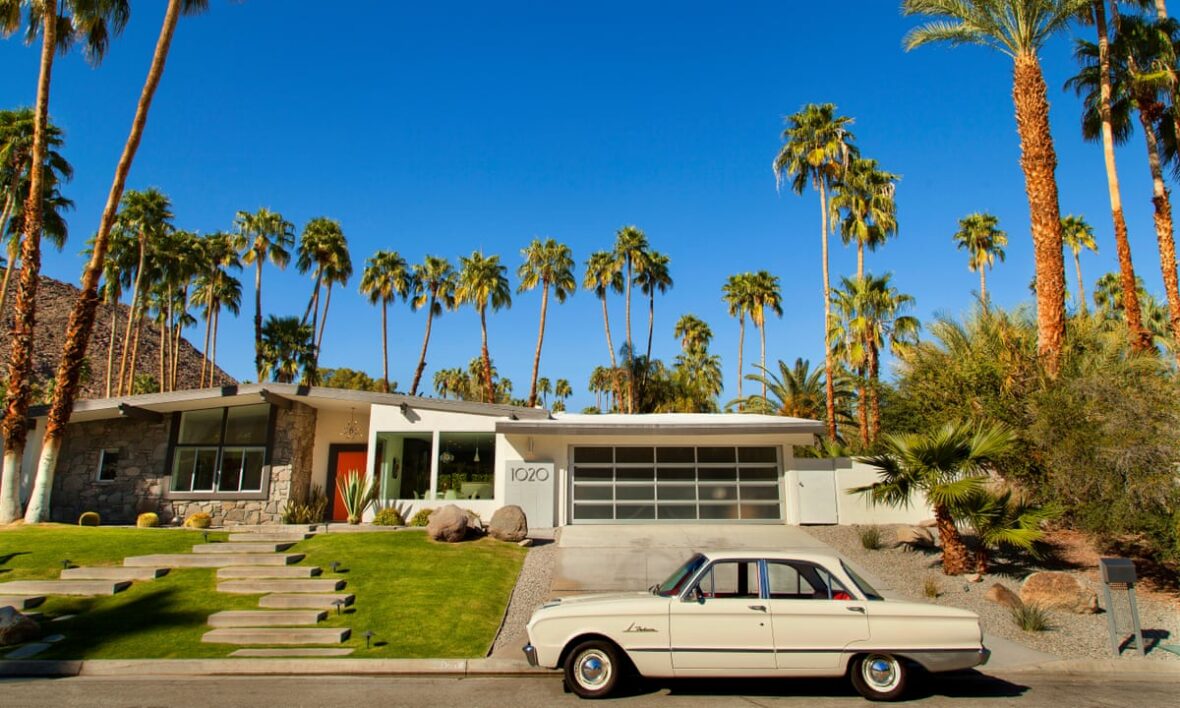Palm Springs is a desert resort city in Riverside County, California, United States, within the Colorado Desert’s Coachella Valley. Take a look below for 20 amazing and awesome facts about Palm Springs, California, United States.
1. The city covers approximately 94 square miles (240 km2), making it the largest city in Riverside County by land area. With multiple plots in checkerboard pattern, more than 10% of the city is part of the Agua Caliente Band of Cahuilla Indians reservation land and is the administrative capital of the most populated reservation in California.
2. Although the population of Palm Springs was 44,575 as of the 2020 census, because Palm Springs is a retirement location, as well as a winter snowbird destination, the city’s population triples between November and March.
3. The city is noted for its mid-century modern architecture, design elements, arts and cultural scene, and recreational activities.
4. The first humans to settle in the area were the Cahuilla people, who arrived 2,000 years ago.
5. Cahuilla Indians lived here in isolation from other cultures for hundreds of years prior to European contact. They spoke Ivilyuat, which is a Uto-Aztecan language.
6. Numerous prominent and powerful Cahuilla leaders were from Palm Springs, including Cahuilla Lion (Chief Juan Antonio).
7. While Palm Canyon was occupied during winter months, they often moved to cooler Chino Canyon during the summer months.
8. The Cahuilla Indians had several permanent settlements in the canyons of Palm Springs, due to the abundance of water and shade. Various hot springs were used during wintertime. The Cahuilla hunted rabbit, mountain goat and quail, while also trapping fish in nearby lakes and rivers. While men were responsible for hunting, women were responsible for collecting berries, acorns and seeds. They also made tortillas from mesquite beans.
9. While the Cahuillas often spent the summers in Indian Canyons, the current site of Spa Resort Casino in downtown was often used during winter due to its natural hot springs.
10. Native American petroglyphs can be seen in Tahquitz, Chino, and Indian Canyons. The Cahuilla’s irrigation ditches, dams and house pits can also be seen here. Ancient petroglyphs, pictographs and mortar holes can be seen in Andreas Canyon. The mortar holes were used to grind acorns into meals.
11. The Agua Caliente (“Hot Water”) Reservation was established in 1876 and consists of 31,128 acres (12,597 ha). Six thousand seven hundred acres (2,700 ha) are located by Downtown Palm Springs. The Native American land is on long lease land and next to one of California’s high-end communities, making the tribe one of the wealthiest in California.
12. The first name for Palm Springs was given by the native Cahuilla: “Se-Khi” (boiling water).
13. When the Agua Caliente Reservation was established by the United States government in 1876, the reservation land was composed of alternating sections (640 acres or 260 ha) of land laid out across the desert in a checkerboard pattern. The alternating non-reservation sections were granted to the Southern Pacific Railroad as an incentive to bring rail lines through the Sonoran Desert.
14. A number of streets and areas in Palm Springs are named for Native-American notables, including Andreas, Arenas, Amado, Belardo, Lugo, Patencio, Saturnino and Chino. All of these are common Cahuilla surnames.
15. Presently the Agua Caliente Band of Cahuilla Indians are composed of several smaller bands who live in the modern day Coachella Valley and San Gorgonio Pass. The Agua Caliente Reservation occupies 32,000 acres (13,000 ha), of which 6,700 acres (2,700 ha) lie within the city limits, making the Agua Caliente natives the city’s largest landowners.
16. As of 1821 Mexico was independent of Spain and in March 1823 the Mexican Monarchy ended. That same year (in December) Mexican diarist José María Estudillo and Brevet Captain José Romero were sent to find a route from Sonora to Alta California; on their expedition they first recorded the existence of “Agua Caliente” at Palm Springs, California.
17. With the Treaty of Guadalupe Hidalgo after the Mexican-American war, the region became part of the United States in 1848.
18. Business owners in the village first established a Palm Springs Board of Trade in 1918, followed by a chamber of commerce; the city itself was established by election in 1938 and converted to a charter city, with a charter adopted by the voters in 1994.
19. Presently the city has a council-manager type government, with a five-person city council that hires a city manager and city attorney. The mayor is directly elected and serves a four-year term. The other four council members also serve four-year terms, with staggered elections. The city is considered a full-service city, in that it staffs and manages its own police and fire departments including parks and recreation programs, public library, sewer system and wastewater treatment plant, international airport, and planning and building services.
20. The city government is a member of the Southern California Association of Governments.




